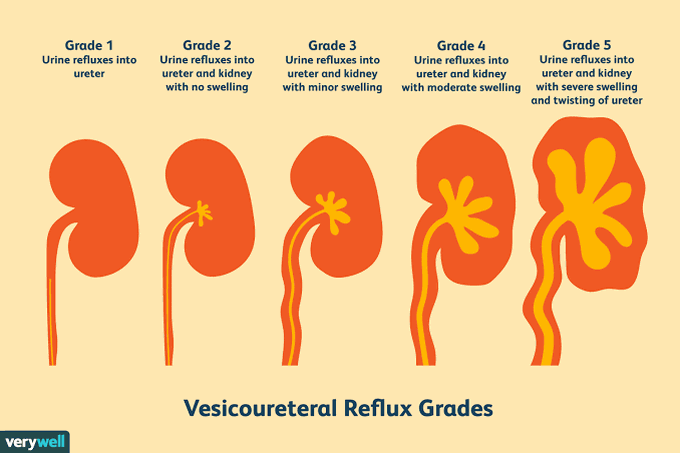


Vesicoureteral Reflux
Vesicoureteral reflux (VUR), or the retrograde flow of urine from the bladder into the ureter, is an anatomic and functional disorder that can result in substantial morbidity, both from acute infection and from the sequelae of reflux nephropathy. VUR is classified into 5 grades (I-V), according to the increasing degree of reflux as follows [3] : Grade I: ureter only Grade II: ureter, pelvis, and calyces; no dilatation; normal calyceal fornices Grade III: mild or moderate dilatation and/or tortuosity of the ureter and mild or moderate dilatation of the renal pelvis; no or only slight blunting of the fornices Grade IV: moderate dilatation and/or tortuosity of the ureter and moderate dilatation of the renal pelvis and calyces; blunting of the sharp angle of the fornices but maintenance of the papillary impressions in the majority of calyces Grade V: gross dilatation and tortuosity of the ureter; severe dilatation of the renal pelvis and calyces; the papillary impressions are no longer visible in the majority of calyces

